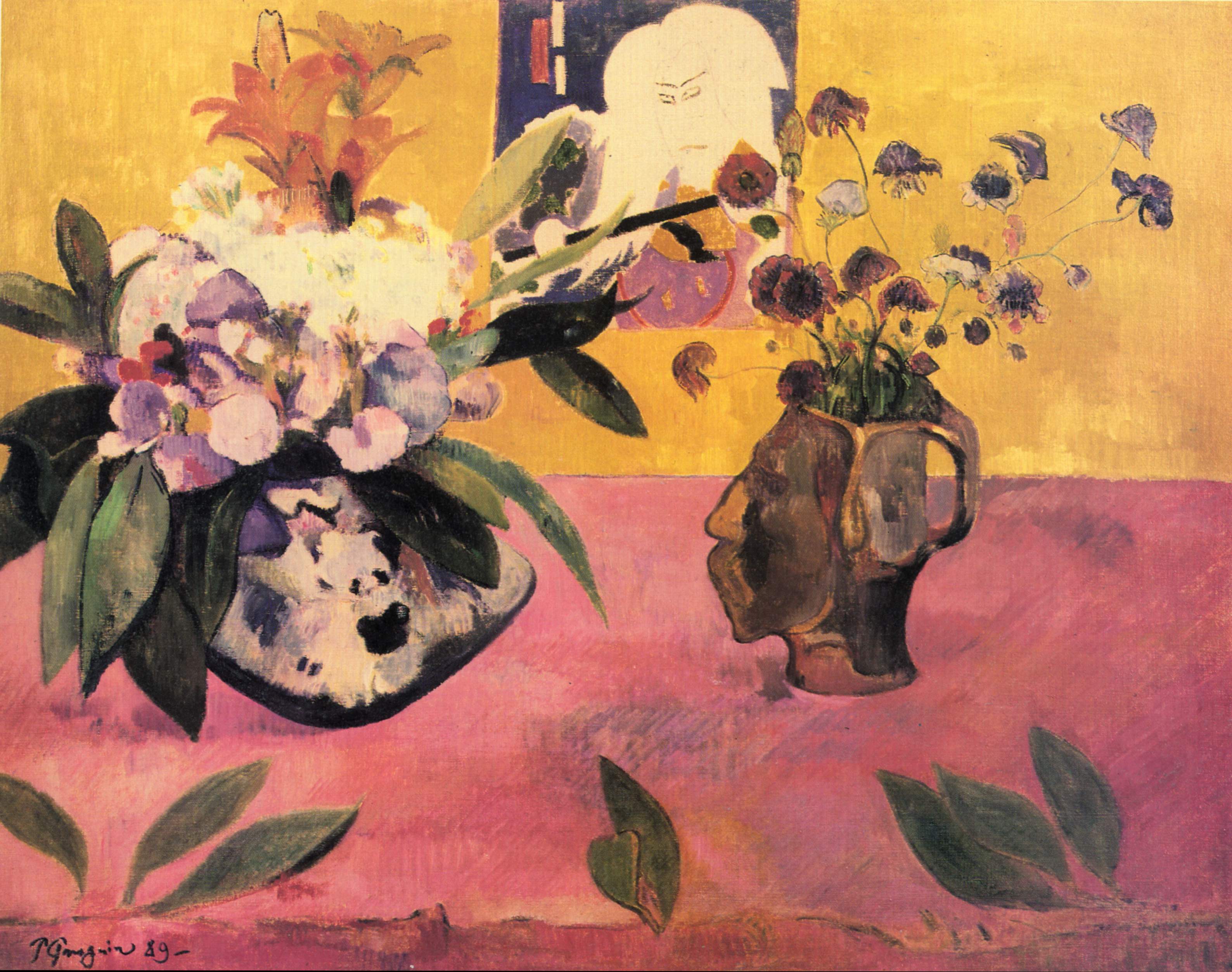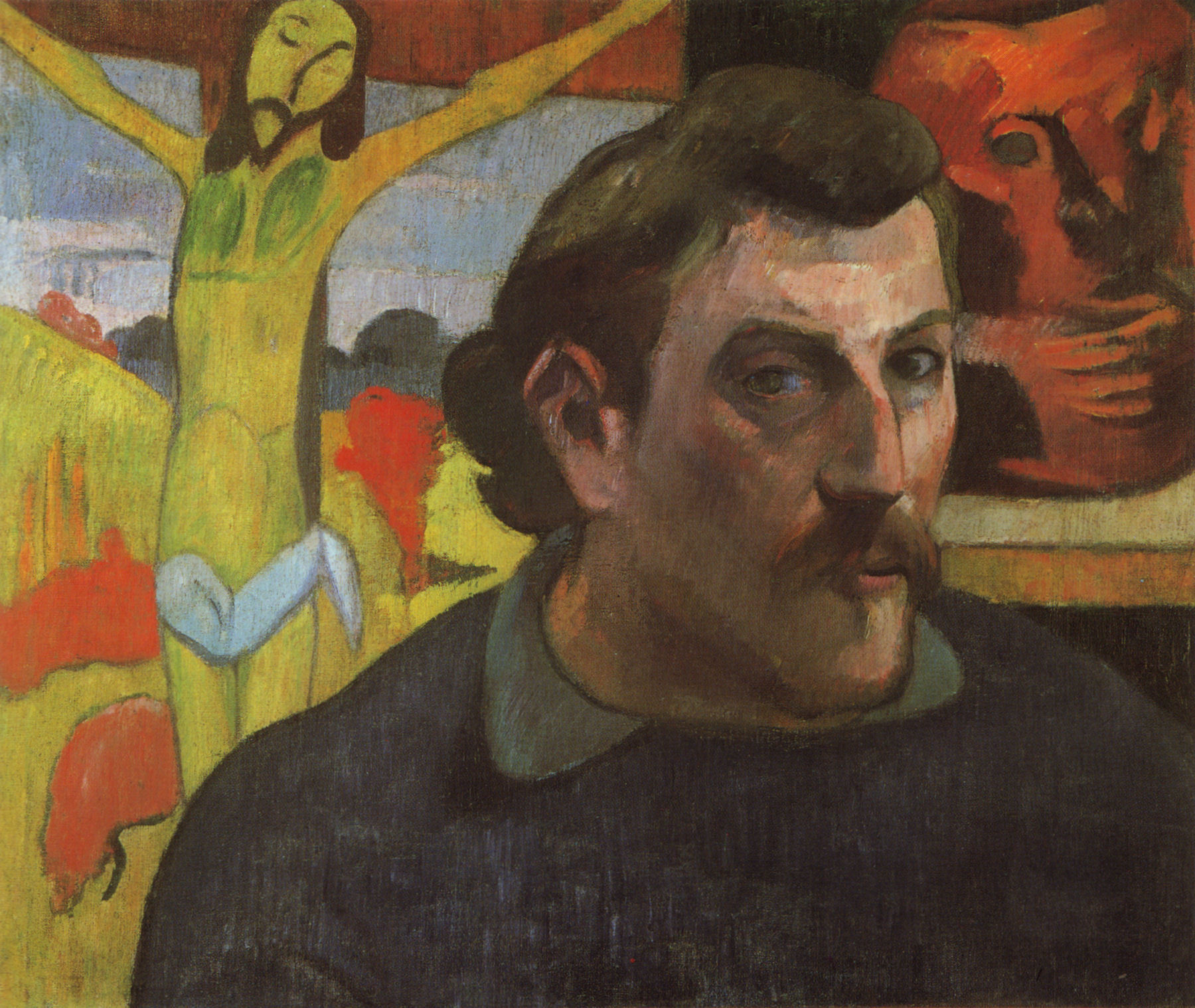Like his friend Vincent Van Gogh, with whom he spent nine weeks painting at Arles in 1888, Paul Gauguin experienced bouts of depression and at one time attempted suicide. Disappointed with Impressionism, he felt that traditional European painting had become too imitative and lacked symbolic depth. In contrast, the art of Africa and Asia seemed to him full of mystic symbolism and vigor. There was a vogue in Europe at the time for the art of other cultures, especially that of Japan (Japonisme). He was invited to participate in the 1889 exhibition organized by Les XX. Under the influence of folk art and Japanese prints, Gauguin evolved towards Cloisonnism, a style given its name by the critic Édouard Dujardin in response to Emile Bernard’s cloisonne enameling technique.




Still-Life with Japanese Woodcut
oil on canvas • 72.4 × 93.7 cm
 Paul Gauguin
Paul Gauguin